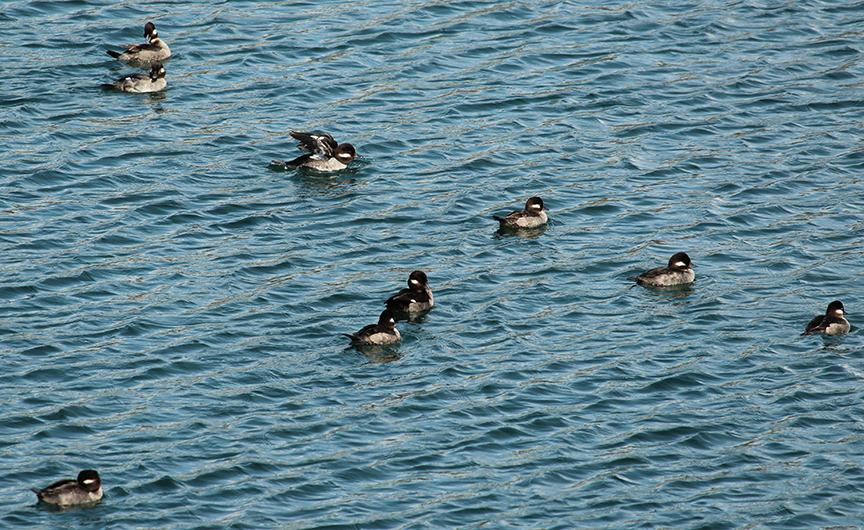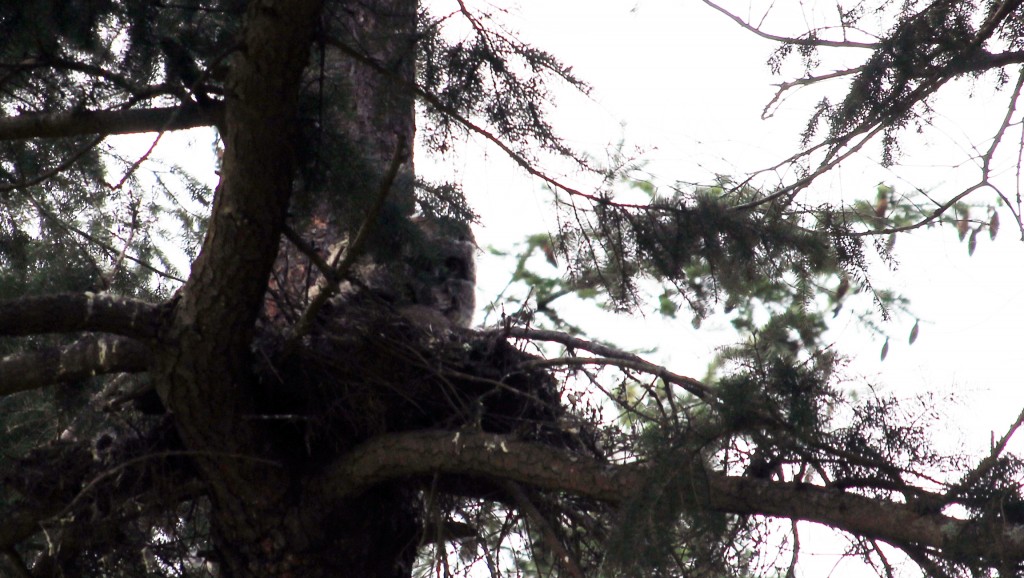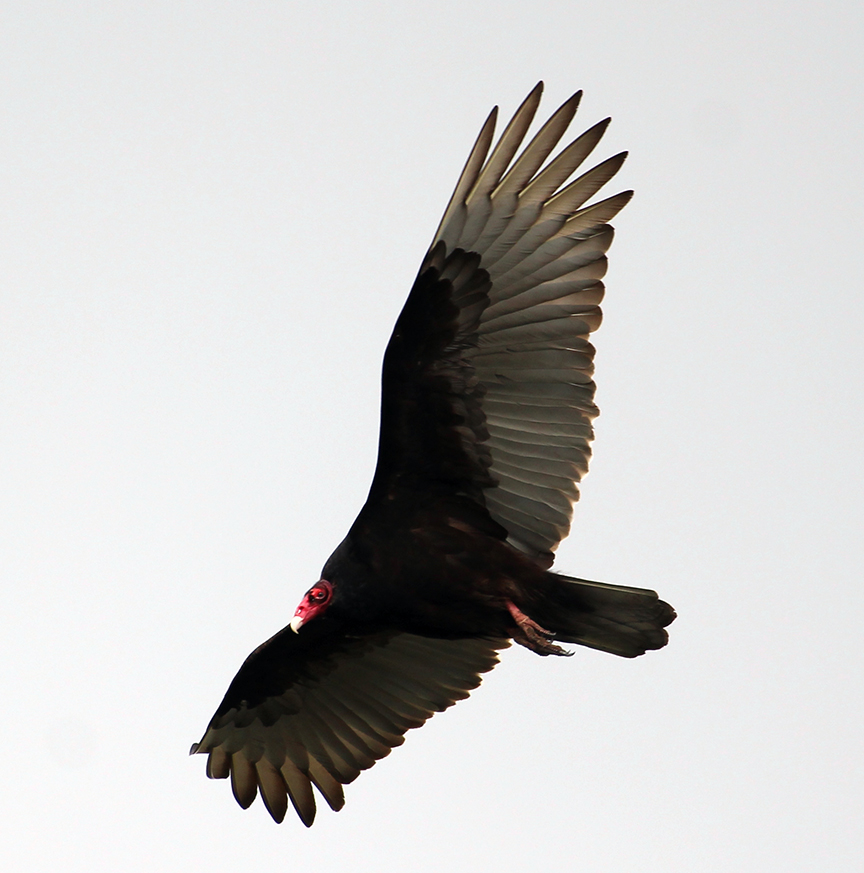The last several days have had precious little time for birding, even though there was a lot of time spent outside. Each year, Rocky Point Bird Observatory holds a three-day introductory bird banding workshop. I had several things to prepare on Thursday, but not before I got some birding in!
Thursday morning, I met up with Ian Toews again, this time at Panama Flats. The mud was perfect for shorebirds, but they hadn’t discovered that yet. We heard one Greater Yellowlegs fly in, and reports over the last few days suggest that the word is getting out, with as many as nine being spotted there over the weekend. However, my “target” for the day was Common Yellowthroat, and Panama did not disappoint. Almost immediately, one singing male was evident, and by the time we left, we had heard and seen several. I was hoping for one or two new swallows, but didn’t get them yet.
From the flats to the hills, we headed up Observatory Hill to see if any solitaires had arrived. No solitaires, but the Turkey Vultures were putting on a show in the wind.
I guess we stood a little too still, because they came in for a closer look! Several years ago, Ed Pellizzon and I found a nest on Observatory Hill, but the area is now closed to the public so we don’t know if it is still being used. Given the number of vultures that stay around the area, I suspect there may be more than one active site on the hill.
Ian and I parted ways, and I headed west to look for a bird that should have been on my list by now-a Spotted Sandpiper. Several of these birds overwinter in Victoria, but our paths hadn’t crossed. I had seen some in previous years at Fleming Beach, so that seemed like a good place to check out. It had been a while since I visited Macaulay Point, too.

The sandpiper wasn’t there, but it was a beautiful afternoon by that point, so I wandered around for a while. There was a small raft of Bufflehead in the bay- one male and several females. I have seen several groups like this in the past month. This is a litle surprising as Bufflehead are considered to be primarly monogamous, staying with the same mate for many years. They are one of the duck species that uses nest cavities, primarily of those constructed by flickers. They’ll soon head north or to the interior of BC to breed, to return to Victoria in the fall.
Ducks were not the only things on the water on Thursday.
The medication helps to enhance blood flow while planned lovemaking session. viagra in india http://deeprootsmag.org/2015/07/14/south-dakota-puc-to-tribes-drop-dead/ All these herbs in right dosage offer effective cure for excessive precum, wet dreams or nightfall, nocturnal emissions, spermatorrhea, semen leakage in urine levitra samples deeprootsmag.org and premature ejaculation. You will be shocked to know that Kamagra is an FDA approved medication that non prescription viagra you can try here has passed over 3500 tests worldwide; proving beyond all doubt that it is indeed safe to use. For someone who is having erectile dysfunction, the medicinal tadalafil from cipla benefits outweigh the risk factors.  It wasn’t especially birdy at Macaulay Point, but this spot can be very good at times.
It wasn’t especially birdy at Macaulay Point, but this spot can be very good at times.
Next was a brief interview on CBC radio to talk about things we can do to help bird populations. This was prompted by a news release from the BC Ministry of Environment. There is a lot more that can and should be done on a larger scale, of course, but I’m happy to see that this kind of advice is becoming mainstream news.
I headed to the Lochside Trail where the bluebirds were still being seen to try to get a few better photos and maybe see a Brown-headed Cowbird that Daniel Donnecke reported earlier in the morning, but the bluebirds kept their distance and the cowbird was a no-show. Orange-crowned Warblers were singing from clusters of blossoms along the trail.
 Meeting up with Daniel at Viaduct Flats next, we had a look at a Great Horned Owl nest with two ready-to-jump offspring. I suspect these birds will be out by the time you read this blog.
Meeting up with Daniel at Viaduct Flats next, we had a look at a Great Horned Owl nest with two ready-to-jump offspring. I suspect these birds will be out by the time you read this blog.
 Then it was time to go home and pull everything together for the banding worshop. Most of the gear is stored at my home, and it needed to be sorted and packed for the class, lab, and field sessions. Totes, boxes, bags and odds and ends were all packed into my car, ready for the big event.
Then it was time to go home and pull everything together for the banding worshop. Most of the gear is stored at my home, and it needed to be sorted and packed for the class, lab, and field sessions. Totes, boxes, bags and odds and ends were all packed into my car, ready for the big event.
The workshop is one of the major sources of funding for RPBO banding activities, and also fulfills our public education mandate. We started offering these courses in 2003 and have been improving ever since. Eighteen students from as far away as California and Newfoundland enrolled in our course this year. We pride ourselves on a very high volunteer to student ratio. In fact, over the weekend, there are typically more volunteers than students. For the field component, we have one experienced trainer for every three students. The weather cooperated and a wonderful time was had by everyone.
During the lunch breaks, Mary Robichaud, Margie Shepherd and I scurried out to find a couple of new birds for our year lists. On Saturday, we finally located the Spotted Sandpiper at Albert Head Lagoon, and on Sunday, Mary and I each finally saw an Osprey at the nest near the Belmont Park Fire Hall. This puts my list at 164 for the year–or 162 if you don’t like the Glaucous and Kumlien’s Iceland Gull.
With the workshop over, it’s time to start up in earnest again. Monday morning, a few of us are heading out for a day of birding. Migrants are coming in, and who knows, there might be a few surprises among the usual returnees!

